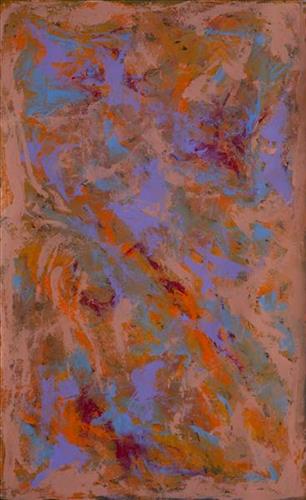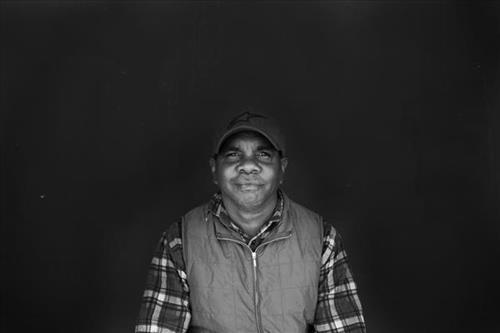Biography:
“My birthplace is Derby, I was born in the old hospital there in 1976. Then my mother used to live in Bidyadanga, so I grew up in Bidgy and went to school there. We used to travel a bit when we were young with our grandmother.
When I was a teenager I asked my grandmother; “Where is your Country? I want to know your Country”. She was from the Great Central Desert, Kulyakartu. She told me, “Go to the desert, go to Parnngurr, and you’ll see my brothers and sisters.” I went there, I saw his [her] brothers and sisters, and they looked the same. Jamu (grandfather) Muuki [Taylor] and Nola [Nyalangka] Taylor. She’s the youngest sister, she has the same face too.
Before that I thought we was from the coast; we love the coast and we grew up there. The coast provided food for us, learning as we grew up to hunt and go fishing, but in the back of my head something felt missing. I used to think, “Where are your roots?” When I discovered my grandmother was from the bush, I continued in that path, wanting to know more. Now I’ve been living in the desert for a long time- working and painting with Martumili and KJ [Kanyirninpa Jukurrpa] rangers, and I know the impact it can have on you.
My grandmother didn’t manage to go back to her Country because she passed on, but I went back there and now I paint that Country- that Country is mine through my blood, through my DNA. Painting my Country strengthens that connection- knowing that I belong to that place. It's a tribute to my grandmother. I can carry her story, carry her legacy through my art. In a sense we know where we come from because of my grandmothers and grandfathers.
I used to do painting in school, landscapes with charcoal. But something was missing. I wanted to create my own style and own ways. One day I went to Perth and I was looking down on Country and I said “This is art. So I put that down in my painting.” Now when I paint, I paint with Taylors. Most of our family are painters. I saw their art, their painting, and I wanted to be a part of that group because I love painting. Muuki Jamu I know, he paint Kulyakartu aswell, but in his unique way. I wanted to create my own style of painting. Now I have my style but I still like to push the boundary, try new things.
I do mostly looking down on Country, all the colours you can see. It’s not always brown and orange- it’s a lot of colours, all mixed up colours. I put everything colours in my canvas. Before I start painting I also create my own background. The colours I use for my background I put on top so they blend together like three dimensional levels.
The best thing about painting is knowing there is a place there for you, and sharing that part of myself through art. To be noticed in a way, people can connect to your story and you alone, because you’re talking from your heart, and giving back, sharing. You’ve got to love what you paint.
I always love people to see my art, and to know what they’re thinking. I can’t wait to have my own exhibition - it’s good to be exposed in the art world. If people ask questions it’s good, because I like to tell; I love talking. I have to paint some more, just keep painting and build up my reputation for the next solo exhibition.”
- Derrick Butt
Derrick was born in Derby in the Western Australian Kimberley but moved to Parnngurr Aboriginal Community at a young age to stay with his grandmother’s side of the family. He began sketching in school at Parnngurr, soon developing a strong love of art, and then learning to paint. In his late teens he moved to Newman, where he started to paint again and begin to showcase his work through Martumili Artists. He’s a natural storyteller, and this clearly carries through to his art, where he proudly tells the story of his heritage and his Country; “I believe art is alive with the story... Painting my Country strengthens that connection- knowing that I belong to that place.”
Derrick is fast developing a reputation for the dramatic, bold representations of his ancestral Country, Kulyakartu, where shimmering undulations combine with pinpricked constellations of colour. Somehow, his paintings convey not only the topographic geological forms, water bodies, and flora of the region, but also the very life essence that lies beneath the land.
Kulyakartu is located in the far north of the Martu homelands, near the Percival Lakes region of Western Australia’s Great Sandy Desert. Kulyakartu is mostly grass Country where there is very good hunting. In particular parnajarrpa (goanna), wild cats, and lunki (witchetty grub) are found in abundance here.




